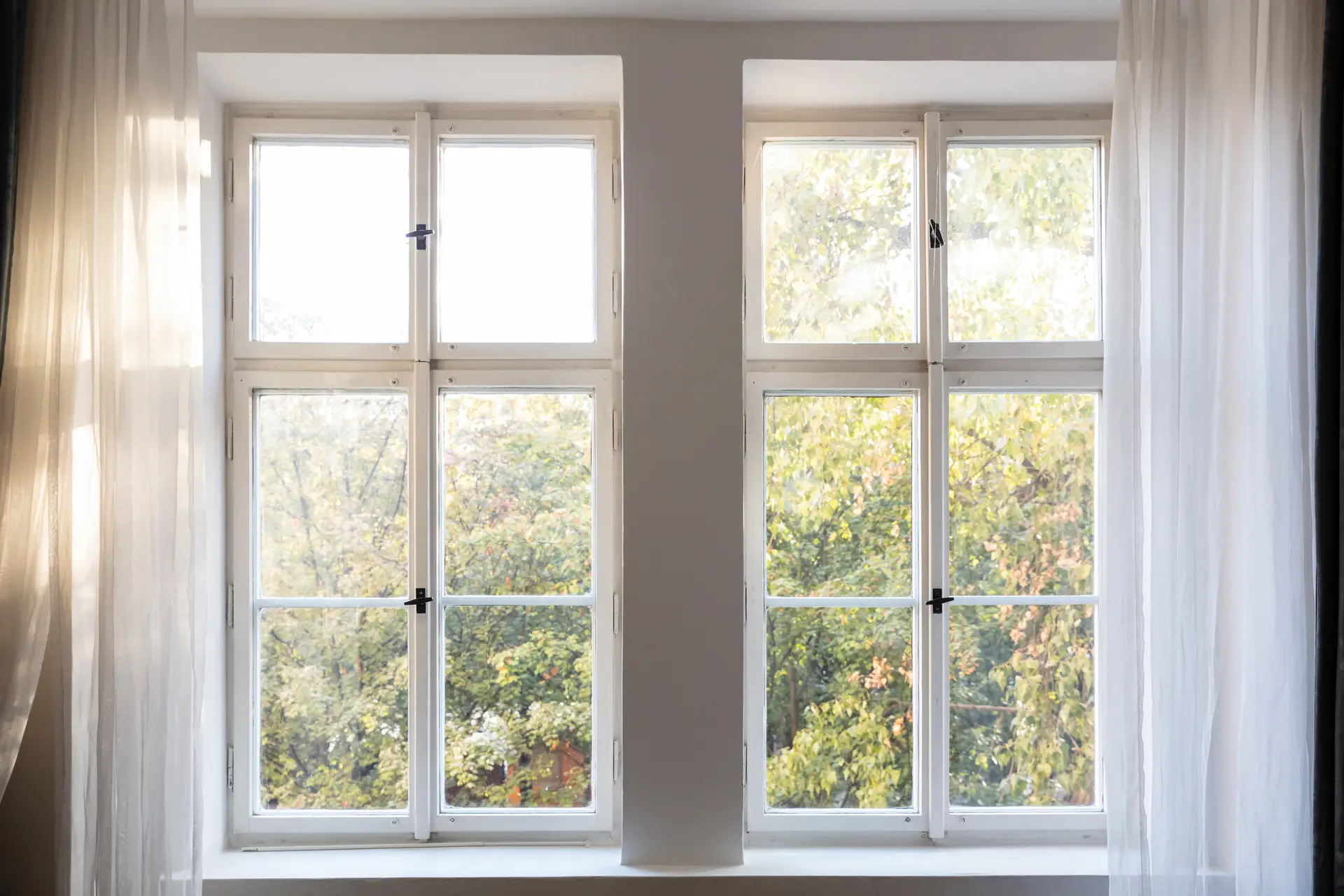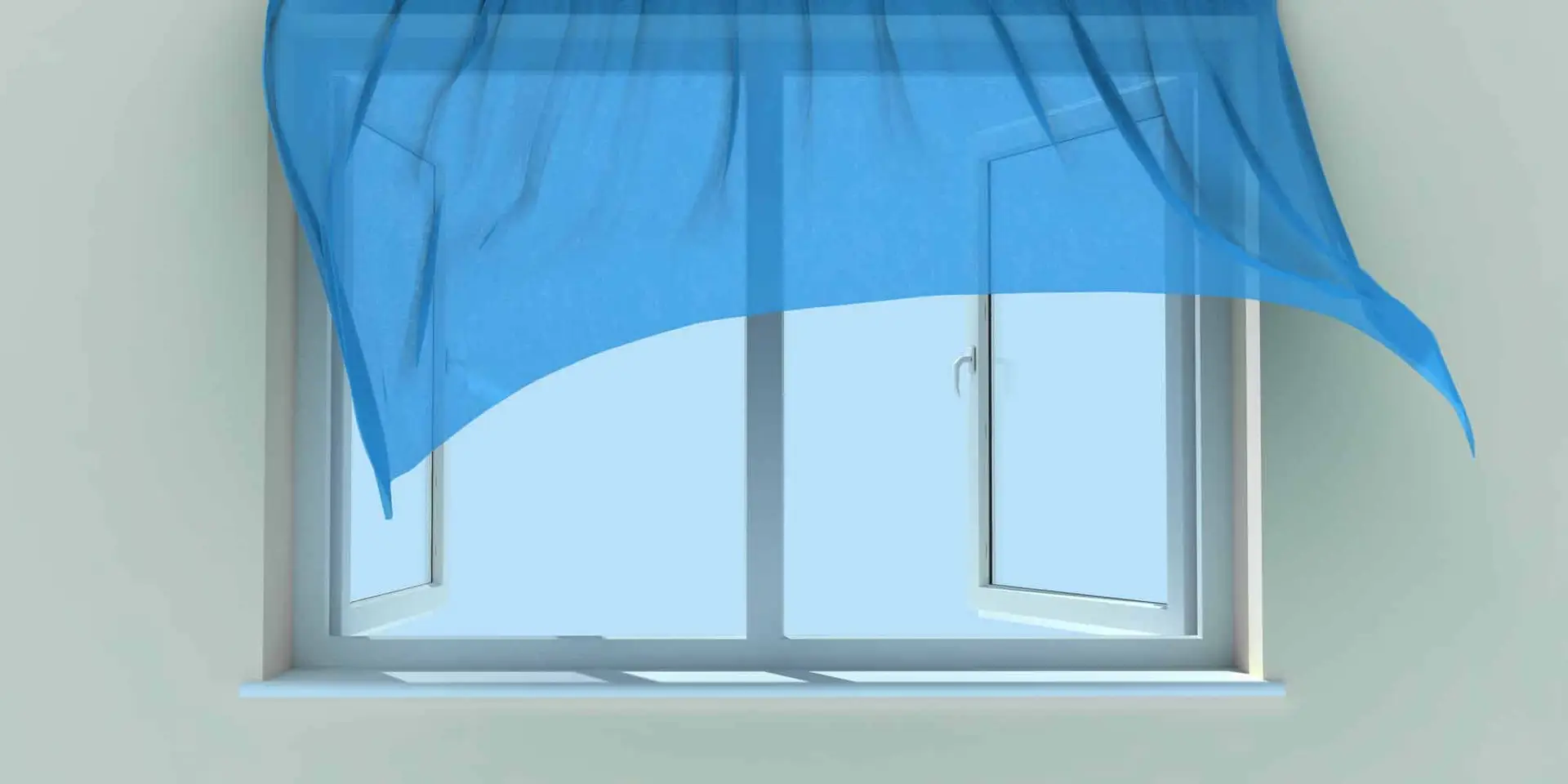Dealing with windy windows these days? When prepping your windows for fall and winter, check if they’re designed to withstand water and air impact.
This is especially true with the impending winter season arriving, with Farmers Almanac predicting lots of sleet, moisture, and storms. Is your home ready for winter weather?
The truth is this: The windows must resist water and wind.. After all, this is what ultimately keeps your home warm, comfortable, and dry. Sounds cozy, right?

How are windows tested for wind and water resistance?
- Newly manufactured windows are sprayed with a continuous stream of pressurized water until failure.
- The industry minimum water resistance is for 8″ of water per hour at 33 mph.
- Top manufacturers rate their windows to withstand wind speeds of 56 mph and up to 8 inches of water per hour. Whoa–that’s a lot of wind!
- This rating is 70% over the industry minimum.
- The American Architectural Manufacturers Association tests wind resistance by blowing pressurized air at 25 miles per hour continuously.
The magic number for high-performance wind and water resistant windows
The best windows on the market have an air infiltration rating as low as 0.01 cfm at 25 miles per hour. This is 23 times more efficient than most major wood window manufacturers such as Pella, Anderson, Marvin and Jeld-Win.
How Much Wind Can a Regular Window Take?
You might be wondering, “How much wind can a regular window take?” Well, the answer varies depending on the type of window you have installed. On average, most windows are built to withstand wind speeds ranging from 25 to 56 miles per hour.
However, for windy regions, you’ll want to opt for windows that can handle even higher wind speeds—up to 100 miles per hour or more.
Testing under pressurized conditions measures windows’ air and water resistance along with their wind pressure tolerance. Make sure to choose windows that exceed industry standards for wind resistance if you want to avoid drafts and water infiltration during windstorms.
The Best Windows for Windy Areas
Living in coastal New England, we need windows that can handle the pressure of high winds. The best windows for windy areas use reinforced frames, multi-point locking systems, and advanced weather stripping to stay sealed and secure, even in strong winds.
Look for double or triple-pane windows, as these offer additional protection against drafts and air infiltration.
Why Windy Windows Matter for Your Energy Bills
Windy windows are more than just a protective feature—they can make a dramatic difference in your home’s energy efficiency. As a result, strong winds can force cold air into your home during the winter, leading to increased heating costs. Keep in mind that inefficient windows can lose roughly 25% of your home’s heat!
Choosing energy-efficient windows designed for windy areas will help keep your home sealed, reducing drafts and maintaining a comfortable indoor environment.
This means less energy wasted on heating and cooling, which can lead to significant savings on your utility bills. In response, Energy Star suggests that upgrading from single to triple pane windows could save you more than $500 a year in energy costs.
How Does Air Infiltration Cause Energy Loss?
Air infiltration is a big deal, and the most energy efficient windows are equipped with features such as weather-stripping, heavy duty airlocks, and other features to block out drafts.
To add perspective, consider that the industry average cfm rating of .30 allows the equivalent of 24 soda cans of air per minute of cold air to transfer through your windows in the winter. If windows account for 10% of air leakage in a home, it’s important to have the lowest air-infiltrated window on the market.

Energy Easily Escapes through the Sill
Window sills are designed to prevent water and air from entering your home. However, the most energy efficient windows come with extra efficient engineering to block out unwanted air and water. It’s all about keeping you dry and toasty!
Choose window sills designed with a double-wall sill dam for added protection against water and air infiltration. This creates an incredibly strong bond between the sill and jamb for maximized protection against wind and rain.
Wind-Proof Power: Look to Your Locks to Prevent Drafts
While your window sill is an exceptional defense against wind and water, your locks also play a role with your energy efficient windows. Heavy duty locks will secure your window sashes and keep your home comfortable—even during the chilliest New England autumn nights. These locks help create an airtight seal and keep your home as cozy as possible.
We Helped These New England Homeowners Get Rid of Their Windy Windows
Many homeowners call Coastal Windows asking for the best windows for windy areas. These homeowners are now enjoying energy efficient replacement windows with the best air infiltration ratings in the industry:
- Vinyl window replacement in Beverly, MA
- Vinyl window replacement in Cohasset, MA
- Energy efficient replacement windows in Beverly, MA
Looking for the best windows for windy areas? Contact Coastal Windows for a free estimate now!




